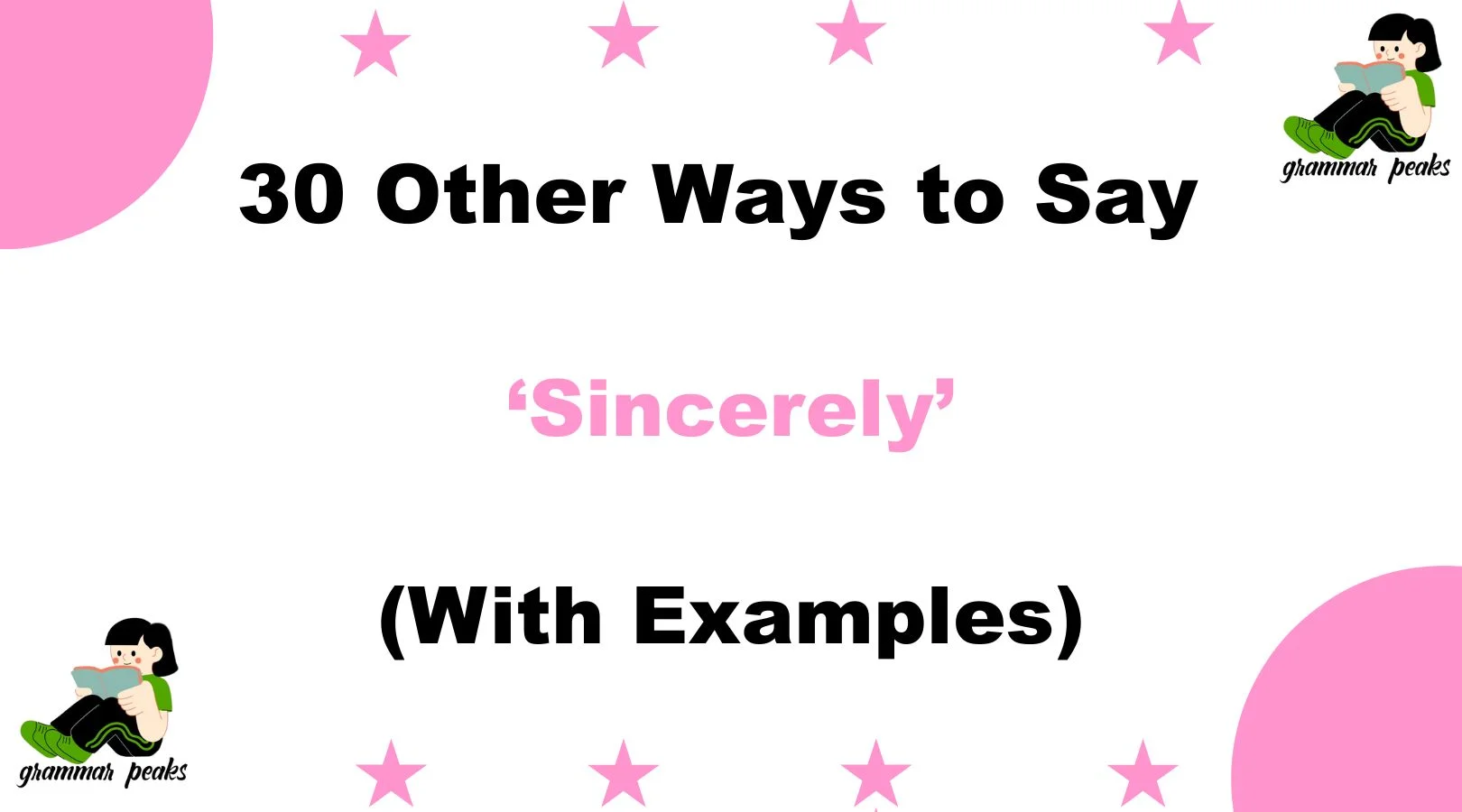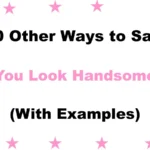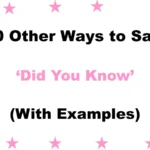In professional communication, the way you close your message can leave a lasting impression. While “Sincerely” is a classic sign-off, using it repeatedly may come across as impersonal.
Exploring alternative closings can help convey your message with warmth, care, and thoughtful phrasing, making your communication more engaging and memorable.
What Does “Sincerely” Mean?
“Sincerely” is a formal sign-off used to express genuine intentions and respect at the end of a letter or email. It signifies that the content of the message is truthful and heartfelt, maintaining a professional tone.
When to Use “Sincerely”
- Formal Business Correspondence
- Cover Letters
- Official Requests
- Professional Apologies
- Letters of Recommendation
Is It Professional/Polite to Say “Sincerely”?
Yes, “Sincerely” is both professional and polite. It is widely accepted in formal communications and conveys respect and authenticity. However, diversifying your sign-offs can add a personal touch and better align with the tone of your message.
Pros and Cons of saying “Sincerely”
Pros:
- Widely Recognized and Accepted
- Conveys Professionalism and Respect
- Suitable for Formal Communications
Cons:
- May Seem Impersonal if Overused
- Lacks Warmth in Informal Contexts
- Not Ideal for Creative or Casual Messages
Synonyms for “Sincerely”
- Best Regards
- Kind Regards
- Warm Regards
- Yours Truly
- Respectfully
- Yours Faithfully
- With Appreciation
- With Gratitude
- All the Best
- Cordially
- Warm Wishes
- Faithfully Yours
- Best Wishes
- Thanks Again
- Yours Respectfully
- Yours in Service
- Kind Thanks
- Cheers
- Thanks and Regards
- Warmest Regards
- Appreciatively
- To Your Continued Success
- Many Thanks
- With Warmth
- Yours Kindly
- Ever Yours
- In Appreciation
- Thank You Again
- Stay Well
- Until Next Time
1. Best Regards
Definition: A professional closing that shows both respect and goodwill.
Detailed Explanation: This sign-off is one of the most widely used and accepted in business correspondence. “Best Regards” communicates formality and kindness without sounding overly warm or distant, making it appropriate for a variety of professional exchanges.
Scenario Example: Thank you for sending over the revised timeline. Best regards, Jamie.
Best Use: Day-to-day business emails, project updates, or first-time professional connections.
Worst Use: Emails that are very emotional, informal, or personal in tone.
Tone: Professional, respectful, balanced.
2. Kind Regards
Definition: A warm and polite way to close a professional message.
Detailed Explanation: “Kind Regards” works well when you want to sound professional but still maintain a touch of friendliness. It’s often used in ongoing client or coworker relationships to show courtesy.
Scenario Example: I appreciate your quick response on this. Kind regards, Maria.
Best Use: Professional emails where a softer tone is needed, especially when continuing conversations.
Worst Use: Strictly formal legal documents or cold outreach.
Tone: Courteous, semi-formal, approachable.
3. Warm Regards
Definition: A friendly and personable version of a traditional sign-off.
Detailed Explanation: “Warm Regards” adds a gentle, human touch to your message. It is appropriate for when you want to emphasize a personal connection without sacrificing professionalism.
Scenario Example: It was a pleasure collaborating with you on the presentation. Warm regards, Alex.
Best Use: Emails to familiar clients or colleagues, thank-you notes, or project completions.
Worst Use: Communications that require high formality, such as applications or legal notices.
Tone: Warm, friendly, professional.
4. Yours Truly
Definition: A traditional and formal sign-off expressing sincerity and loyalty.
Detailed Explanation: “Yours Truly” has been a standard closing in formal letters and is still used in very traditional professional or legal communications.
Scenario Example: Please don’t hesitate to contact me if you need anything further. Yours truly, Daniel.
Best Use: Business letters, formal requests, and legal documents.
Worst Use: Casual emails or modern startup communication styles.
Tone: Formal, classic, respectful.
5. Respectfully
Definition: A closing that communicates high regard and professionalism.
Detailed Explanation: “Respectfully” is perfect when addressing someone in a higher position or when the topic requires a formal and respectful tone. It’s often used in complaints, formal appeals, or legal settings.
Scenario Example: I hope this information helps clarify our concerns. Respectfully, Rachel Kim.
Best Use: Letters to authority figures, formal job applications, and legal correspondence.
Worst Use: Friendly exchanges or light-hearted emails.
Tone: Formal, deferential, serious.
6. Yours Faithfully
Definition: A formal sign-off used when the recipient is unknown by name.
Detailed Explanation: “Yours Faithfully” is traditionally used in British English and formal letters where you start with “Dear Sir/Madam.” It conveys formality and respect, especially in official documents.
Scenario Example: I look forward to hearing from you regarding the next steps. Yours faithfully, Olivia Bennett.
Best Use: Formal job applications, government correspondence, or letters where the recipient’s name is not known.
Worst Use: Emails with an established rapport or where the recipient’s name is used.
Tone: Formal, polite, distant.
7. With Appreciation
Definition: A sign-off that emphasizes gratitude.
Detailed Explanation: “With Appreciation” is a genuine, warm way to close a message when you want to recognize someone’s help, time, or effort. It’s ideal for thank-you notes or follow-ups.
Scenario Example: Thank you for your valuable input during the meeting. With appreciation, Noah Carter.
Best Use: Thank-you emails, client appreciation notes, or volunteer correspondence.
Worst Use: Formal corporate communications or legal emails.
Tone: Warm, genuine, thankful.
8. With Gratitude
Definition: A heartfelt and thankful closing phrase.
Detailed Explanation: “With Gratitude” is slightly more emotional than “With Appreciation,” showing deeper personal thanks. It’s best used when expressing sincere appreciation or reflecting a meaningful exchange.
Scenario Example: I’m truly grateful for your mentorship and support. With gratitude, Emma Lewis.
Best Use: Personal thank-you emails, mentorship communications, or appreciation after major projects.
Worst Use: Cold or impersonal business messages.
Tone: Emotional, warm, appreciative.
9. All the Best
Definition: A friendly, well-wishing sign-off.
Detailed Explanation: “All the Best” works well in both professional and semi-casual settings. It expresses support and goodwill while keeping things simple and clean.
Scenario Example: Wishing you continued success with your launch. All the best, Liam Walker.
Best Use: Farewell notes, team messages, or follow-ups after meetings.
Worst Use: Legal or highly formal communications.
Tone: Friendly, casual-professional, upbeat.
10. Cordially
Definition: A courteous and formal sign-off.
Detailed Explanation: “Cordially” is a respectful, classic sign-off that offers polite warmth. It’s a little less used today but still works well in formal settings.
Scenario Example: I’m happy to discuss further at your convenience. Cordially, Ava Mitchell.
Best Use: Traditional business letters, formal email follow-ups.
Worst Use: Highly emotional or modern informal emails.
Tone: Polite, formal, slightly old-fashioned.
11. Warm Wishes
Definition: A kind and heartfelt closing statement.
Detailed Explanation: “Warm Wishes” is ideal for messages with a personal or appreciative tone. It reflects genuine care while staying professional.
Scenario Example: Congratulations on your promotion! Warm wishes, Mason Rivera.
Best Use: Congratulations, farewells, holidays.
Worst Use: Highly formal communications.
Tone: Warm, heartfelt, positive.
12. Faithfully Yours
Definition: A variation of “Yours Faithfully” with added personal touch.
Detailed Explanation: “Faithfully Yours” retains formal respect while adding a hint of personal dedication. It’s not as common but still fits well in formal letters.
Scenario Example: Thank you for your continued guidance. Faithfully yours, Isabella White.
Best Use: Formal or ceremonial letters, long-term professional relationships.
Worst Use: Cold or distant communications.
Tone: Formal, respectful, personal.
13. Best Wishes
Definition: A warm and encouraging sign-off.
Detailed Explanation: “Best Wishes” offers a touch of optimism and friendliness. It’s suitable for supportive or encouraging messages without being too informal.
Scenario Example: I hope everything goes smoothly with your move. Best wishes, Ethan Hall.
Best Use: Well-wishing emails, personal updates, or thank-yous.
Worst Use: Formal corporate or legal content.
Tone: Warm, caring, semi-formal.
14. Thanks Again
Definition: A follow-up thank-you that reinforces appreciation.
Detailed Explanation: “Thanks Again” is straightforward and appreciative. It works well when you’ve already said thanks earlier and want to end with another gesture of gratitude.
Scenario Example: I appreciate you taking the time to review this. Thanks again, Charlotte Brooks.
Best Use: Client follow-ups, simple gratitude emails.
Worst Use: Initial emails or when thanks haven’t already been expressed.
Tone: Thankful, informal, relaxed.
15. Yours Respectfully
Definition: A respectful closing used to show deference.
Detailed Explanation: “Yours Respectfully” is best for communications where humility or formality is important. It adds gravity to the tone.
Scenario Example: I trust this aligns with your expectations. Yours respectfully, Henry Davis.
Best Use: Formal replies, academic communications, or hierarchical messages.
Worst Use: Personal or emotional exchanges.
Tone: Respectful, formal.
16. Yours in Service
Definition: A sign-off expressing commitment to assist.
Detailed Explanation: “Yours in Service” is often used in nonprofit, community, or customer support settings to show continued willingness to help.
Scenario Example: Let me know if you need anything else. Yours in service, Lily Foster.
Best Use: Nonprofits, support teams, client-facing roles.
Worst Use: Traditional corporate communications.
Tone: Helpful, warm, service-oriented.
17. Kind Thanks
Definition: A warm and polite way to say thank you.
Detailed Explanation: “Kind Thanks” adds a softer tone to standard gratitude. It works well in polite, thoughtful exchanges.
Scenario Example: I truly appreciate your input on this matter. Kind thanks, Owen Green.
Best Use: Email appreciation, client correspondence.
Worst Use: Cold, formal letters.
Tone: Gentle, thankful, friendly.
18. Cheers
Definition: A casual and upbeat closing.
Detailed Explanation: “Cheers” is informal and cheerful, commonly used in creative industries or among coworkers with friendly rapport.
Scenario Example: Looking forward to catching up next week. Cheers, Harper Morgan.
Best Use: Friendly workplace emails, startups, or creative teams.
Worst Use: Traditional corporate, legal, or hierarchical settings.
Tone: Casual, friendly, relaxed.
19. Thanks and Regards
Definition: Combines gratitude with a standard closing.
Detailed Explanation: “Thanks and Regards” balances appreciation and professionalism, common in business communication globally.
Scenario Example: Thank you for the update. Thanks and regards, Samuel Hughes.
Best Use: Follow-ups, client communications.
Worst Use: Extremely formal or heartfelt situations.
Tone: Neutral, polite, respectful.
20. Warmest Regards
Definition: An enhanced version of “Warm Regards.”
Detailed Explanation: “Warmest Regards” expresses greater affection and gratitude while staying professional.
Scenario Example: It’s been a pleasure collaborating with you. Warmest regards, Grace Adams.
Best Use: Goodbyes, thank-yous, team communications.
Worst Use: Highly formal or rigid exchanges.
Tone: Warm, friendly, genuine.
21. Appreciatively
Definition: A single-word closing showing gratitude.
Detailed Explanation: “Appreciatively” is clean and clear, best when your message is centered on recognition.
Scenario Example: Your insights were incredibly helpful. Appreciatively, Elijah Scott.
Best Use: Client appreciation, colleague recognition.
Worst Use: Cold or impersonal communications.
Tone: Appreciative, sincere.
22. To Your Continued Success
Definition: A positive sign-off that wishes the recipient well.
Detailed Explanation: “To Your Continued Success” communicates support and encouragement, ideal for congratulatory messages.
Scenario Example: Your growth has been inspiring. To your continued success, Zoe King.
Best Use: Celebratory notes, milestone acknowledgments.
Worst Use: Formal or negative tone messages.
Tone: Positive, supportive, uplifting.
23. Many Thanks
Definition: A slightly more informal version of “Thank you.”
Detailed Explanation: “Many Thanks” feels warmer and a bit more casual, often used in UK English as a standard thank-you closing.
Scenario Example: I appreciate your help finalizing the report. Many thanks, Jack Coleman.
Best Use: Casual professional messages, appreciation notes.
Worst Use: Legal or highly formal documents.
Tone: Warm, appreciative.
24. With Warmth
Definition: A heartfelt and kind sign-off.
Detailed Explanation: “With Warmth” expresses sincerity and friendliness, especially suited to messages with emotional significance.
Scenario Example: Thank you for always being such a supportive partner. With warmth, Madison Parker.
Best Use: Farewells, thank-yous, mentorship emails.
Worst Use: Legal or formal business contexts.
Tone: Sincere, emotional, warm.
25. Yours Kindly
Definition: A soft, courteous alternative to “Sincerely.”
Detailed Explanation: “Yours Kindly” is more often used in British English and adds a gentle tone to respectful closings.
Scenario Example: Please let me know your availability next week. Yours kindly, Benjamin Ross.
Best Use: Informal formal messages, international business settings.
Worst Use: American legal correspondence.
Tone: Polite, gentle, semi-formal.
26. Ever Yours
Definition: A poetic, loyal expression of closing.
Detailed Explanation: “Ever Yours” is rarely used today but still functions well in personal, deeply appreciative messages.
Scenario Example: Thank you for your years of collaboration and friendship. Ever yours, Natalie Blake.
Best Use: Farewell letters, meaningful goodbyes.
Worst Use: Cold or impersonal emails.
Tone: Poetic, affectionate, rare.
27. In Appreciation
Definition: A straightforward way to end with thanks.
Detailed Explanation: “In Appreciation” is versatile and professional, perfect when you want to show thanks without emotional overtones.
Scenario Example: I appreciate your feedback and look forward to our next steps. In appreciation, Wyatt Long.
Best Use: Business thanks, client updates.
Worst Use: Informal chats or casual jokes.
Tone: Grateful, respectful.
28. Thank You Again
Definition: Reinforces previous expressions of gratitude.
Detailed Explanation: “Thank You Again” is ideal when you’ve already said thanks and want to end on that note.
Scenario Example: I can’t thank you enough for helping me through the transition. Thank you again, Hailey Morris.
Best Use: After repeated help, strong gratitude.
Worst Use: First-time emails or impersonal notes.
Tone: Grateful, personal.
29. Stay Well
Definition: A caring and supportive closing.
Detailed Explanation: “Stay Well” shows concern and empathy, especially fitting in wellness or difficult times.
Scenario Example: Wishing you peace and strength this week. Stay well, Leo Patterson.
Best Use: Personal check-ins, health-conscious notes.
Worst Use: Formal business emails.
Tone: Kind, caring, empathetic.
30. Until Next Time
Definition: A friendly sign-off anticipating future contact.
Detailed Explanation: “Until Next Time” adds a conversational and optimistic tone, ideal for continuing connections.
Scenario Example: Looking forward to working together again soon. Until next time, Aurora Jenkins.
Best Use: Follow-ups, project closures, casual professional settings.
Worst Use: Highly formal messages.
Tone: Friendly, informal, future-facing.
Conclusion
Choosing the right way to say “Thank you and best regards” can completely change the tone and impact of your message. Whether you’re aiming for a formal, warm, appreciative, or casual sign-off, the phrase you pick says a lot about how you value the relationship. From the classic “Sincerely” to the more heartfelt “With Gratitude”, each option offers a unique blend of professionalism and personality.
Don’t be afraid to match the tone of your email with the tone of your closing. Consistency builds trust. Whether you’re emailing a new client, an old colleague, or a helpful friend, the right words matter. Use them wisely and with intention. These alternatives are your toolbox—choose the one that best reflects your message, your style, and your voice.
FAQs
1. What’s the most professional alternative to “Thank you and best regards”?
The most professional alternatives include “Sincerely,” “Yours Faithfully,” and “With Appreciation”, especially in formal business contexts or when corresponding with new contacts.
2. Can I use casual sign-offs like “Cheers” in a professional email?
Yes, but only in relaxed settings or with colleagues you know well. “Cheers” is best used in informal work environments, creative industries, or friendly internal communications.
3. Is it okay to use different sign-offs for the same recipient?
Absolutely. Varying your closings based on the context of each message can make your communication feel more thoughtful and natural. Just keep the tone consistent with your overall message.
4. Should I include both gratitude and regards in a single sign-off?
You can, but it’s often better to choose one strong phrase. Alternatives like “With Gratitude” or “Thanks and Regards” naturally combine both elements without sounding repetitive.
5. Do different countries prefer different sign-off styles?
Yes. For example, “Yours Faithfully” is more common in the UK, while “Sincerely” dominates in the US. Be mindful of cultural norms when writing internationally.

Mia Rose is a passionate Language Coach and Contributor at GrammarPeaks, where she specializes in practical grammar tips and language learning strategies. With a strong foundation in education and communication, Mia brings a friendly, approachable style to her writing. Her goal is to make complex grammar rules simple and usable for learners at any level, helping them grow in both confidence and fluency.





